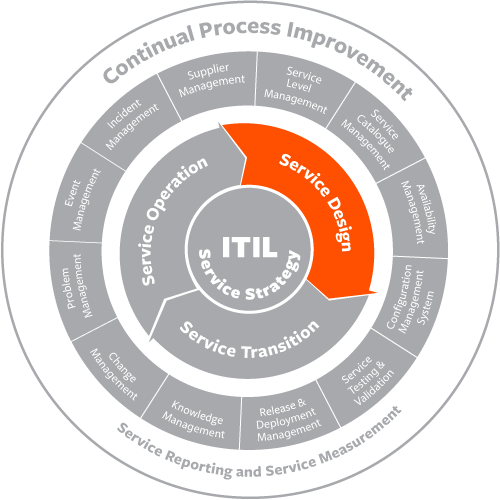What is capacity management?
ITIL capacity management is responsible for ensuring that adequate capacity is available at all times to meet the agreed needs of the business in a cost-effective manner. The capacity management process works closely with service level management to ensure that the business’ requirements for capacity and performance can be met. Capacity management also serves as a focal point for any capacity issues in IT Service Management. Capacity management supports the service desk and incident and problem management in the resolution of incidents and problems related to capacity.

Successful capacity management requires a thorough understanding of how business demand influences demand for services, and how service demand influences demand on components. This is reflected by the three subprocesses of capacity management: business capacity management, service capacity management, and component capacity management. It is required that capacity management develop a capacity plan, which addresses both current capacity and performance issues, as well as future requirements. The capacity plan should be used throughout IT Service Management for planning and budgeting purposes.
Download Now: ITIL 4 Best Practice e-Books
These all-new for 2020 ITIL e-books highlight important elements of ITIL 4 best practices. Quickly understand key changes and actionable concepts, written by ITIL 4 contributors.
Capacity management is responsible for defining the metrics to be captured during service operation to measure performance and use of capacity. This includes monitoring tools, which can provide input to the event management process. Capacity management may be called upon to perform tactical demand management, which involves using techniques such as differential charging to change users’ behavior so that demand does not exceed supply. Other activities of capacity management include sizing (working with developers to understand capacity requirements of new services) and modeling (building statistical representations of systems).
Capacity management definitions
Before implementing capacity management, it’s important everyone is on the same page. One way for an organization to accomplish this is to learn and own the definition. Capacity management introduces new ideas and terms that should be discussed before they are implemented, including component, capacity plan, capacity report, capacity management information system, and performance.
A component is the underlying structure behind a service. For example, it is the database behind the application or the server underneath the website. It is a component that must be purchased, built, maintained, and monitored. Improving performance often involves a replacement, upgrade, or load balancing of the individual component.
The capacity plan contains different scenarios for predicted business demand and offers costed options for delivering the service-level targets as specified. This plan allows service designers to make the best choices about how to provide quality service at an affordable price point.
The capacity report is a document that provides other IT management with data regarding service and resource usage and performance. This is used to help other managers make service-level decisions or decisions regarding individual components.
The capacity management information system (CMIS) is the virtual repository used to store capacity data. Dashboards are one way to store and report on capacity data.
Performance is how quickly a system responds to requests. For example, how quickly an application processes data and returns a new screen is one indicator of its performance.
The purpose of capacity management
The purpose of capacity management is to determine how much capacity should be provided based on the information from demand management regarding what should be provided. In particular, capacity management is concerned with speed and efficiency. If IT capacity forecasts are accurate and the amount of IT capacity in place meets business needs, the capacity management process is a success.
Capacity management activities
This process involves constant measurement, modeling, management, and reporting. More specifically, these activities include:
- Designing a service so that it meets service-level agreement (SLA) objectives once implemented
- Managing resource performance so that services meet SLA objectives
- Assisting with the diagnosis of performance-related incidents and problems
- Creating and maintaining a capacity plan that aligns with the organization’s budget cycle, paying particular attention to costs against resources and supply versus demand
- Continually reviewing current service capacity and service performance
- Gathering and assessing data regarding service usage, and documenting new requirements as necessary
- Guiding the implementation of changes related to capacity
In practice, implementing this from scratch would involve the same steps as for other projects. For example, implementation might follow these broad steps:
-
- Gather the data
Work with business to determine the service-level need. Determine what this means relative to service availability and service capacity. Identify the individual components necessary. Work with demand management resources to predict demand based on user roles. Work with the financial management team to determine the costs. - Design a service and reach agreement
Once you’ve identified the services and the level of performance needed, the cost, and the expected demand, you’ll be able to work with ITIL service level management to build an SLA that everyone can agree to. You will also have designed a service at this point. - Build the service
The next step is to build the service. This involves purchasing the components and building the IT infrastructure, processes, and documentation necessary to support the new service/s. Capacity management should continue to monitor the business needs and any new data to ensure that the service being built will have the necessary capacity for quality performance. Financial management will be involved at this stage to facilitate purchasing of components and other resources. - Operation
Once you have built the service, and everyone agrees it will meet demand, capacity, and availability requirements, it’s go-live time. This is when service operation takes over. Capacity management then supports service operation to deliver services that meet targets.
- Gather the data
Monitoring and managing services and their individual components are most easily done via monitoring dashboards that provide data on multiple components in one location. Gathering the data manually from each service or component adds to the total time it takes to produce service-capacity reports.
Capacity management processes
This process is built on several sub-processes, including business capacity management, service capacity management, component capacity management, and capacity management reporting. These processes share common activities, such as modeling, workload management, analysis, and optimization.`
Business capacity management is the sub-process that turns the needs of the business into IT service requirements. It is involved in service strategy and service design, reviewing the data to ensure that there will be not be any changes in demand before the IT service is implemented. This sub-process works with demand management to ensure that the service is meeting business needs. Other sub-processes make sure that the service meets service-level targets; this sub-process ensures that the service-level targets meet the business needs. A thorough understanding of the business and the service-level agreements is necessary to effectively perform the activities in this sub-process.
Service capacity management is the sub-process that focuses on the operation of the service. Unlike component capacity management, this process focuses solely on the service itself. It ensures that the end-to-end service provided meets agreed-upon service-level targets. For example, this process would monitor, control, and predict a ticketing system to ensure it was up and running efficiently.
Component capacity management focuses on the technology that provides the performance and capacity to the IT service. Components are things like hard disks, phones, and databases. This sub-process requires knowledge of how each component individually contributes to service performance. It manages, controls, and predicts performance usage and capacity of individual components rather than the service as a whole (as seen in service capacity management). The goal of this sub-process is to reduce the total amount of service downtime by monitoring current performance and predicting future performance. Component capacities are designed around service capacities and not the other way around.
Capacity management reporting is the final sub-process. It gathers and then provides other stages with the data related to service capacity, service usage, and service performance. The output of this sub-process is the service capacity report.
Capacity management and other ITIL processes
Capacity management must interface with other processes within ITIL, including demand management, availability management, service-level management, and financial management. When the business has a service need, it comes from demand management. It’s then relayed to the business continuity management team, which then translates it into an SLA and capacity terms. Service-level management helps with this. Once the service is deployed, service capacity management and component capacity management come in to keep everything at peak performance. Availability management works hand-in-hand with capacity management to keep services running and prevent downtime. Financial management comes into play when individual components must be estimated, purchased, maintained, and replaced. Not working closely with financial management can result in either untimely drops in uptime or organizational budget losses.
Takeaways
ITIL capacity management is an important one. With it, your organization can save costs by having the data necessary to make decisions regarding service performance. Rather than being based on gut decisions and guesses, you can use gathered component data to make business cases that win over financial management. What’s more, this process can identify where performance tuning is a better choice than upgrading, thereby saving the organization money. Other barriers, such as performance bottlenecks and early indicators of performance issues, are identified before they become problems. This maintains uptime and increases customer and end-user satisfaction.








